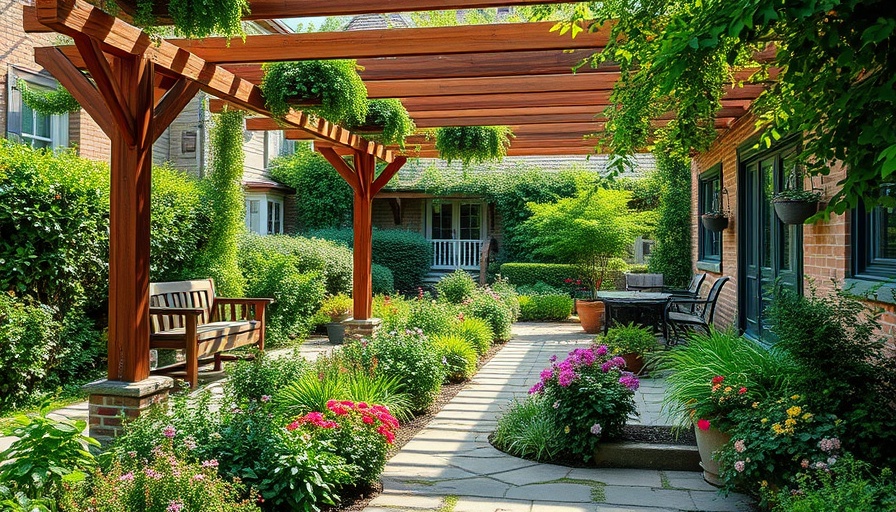
Transforming Town Gardens: Key Design Principles
Town gardens may be limited in space, but that doesn’t mean they can’t flourish with character and charm. With the right design details, even the smallest plots can feel expansive and inviting. Top designers Charlotte Rowe and Tomoko Kawauchi share their secrets on how to create beautiful, functional gardens that amaze. Let’s dive into the strategies that can elevate your town garden experience!
Functionality Comes First: What Do You Want?
Every successful garden starts with a clear purpose. Ask yourself—what activities do you want your garden to support? Is it for al fresco dining, playtime for the kids, or a quiet retreat to sip coffee in the morning sun? According to Rowe and Kawauchi, deciding on practical uses should guide every design choice. This foundational planning significantly impacts the layout. They advise creating a short list that denotes your aspirations for the garden, establishing priorities that dictate further decisions.
Creating a Captivating Journey
A well-thought-out path can turn a simple garden into an adventure. Instead of seeing the whole space at once, breaking it up into various areas—each inviting you to explore—enhances the overall perception of space. As Tomoko notes, thinking about different entry points encourages exploration. Design paths that lead to unique features like dining areas or quiet nooks. If people can’t see the entire garden at a glance, it feels much more expansive and intriguing. Chris emphasizes that opt for rectilinear lines in town gardens for both aesthetics and practicality but adds that softening edges with ample planting can add warmth and depth.
Utilizing Levels for Visual Appeal
Hills and gradients can seem like a challenge, but they can also be a unique asset to your garden design. Rowe and Kawauchi detail the detrimental effects of flattening natural slopes—such as loss of light and detracting from the garden's character. Instead of reducing elevation changes, embrace them! This can create visual movement and interest, making the garden seem larger and livelier. For instance, steps that lead to different levels not only facilitate movement but can also act as additional planting surfaces. Utilizing variation in heights adds drama and complexity to a garden.
Planting Strategically for Optics
While paths and levels draw the eye and create a sense of exploration, strategic planting heightens this effect. Tall plants can create natural borders and direct views, helping to delineate space. Rowe suggests using varyingly sized plants to create depth, layering smaller blooms in front of larger structures. This not only adds dimension but also offers visual surprises that keep the viewer engaged. Floral arrangements can make narrow spaces feel broader, while also adding bursts of color that enhance the garden's beauty.
Personal Touches: Making It Your Own
Beyond design principles, it’s crucial to imbed personal elements into your garden. Items that resonate with your experiences, like a favorite chair or a colorful pot, foster a sense of belonging and uniqueness. Charlotte emphasizes that making these spaces your own acts as a vital link, allowing visitors to connect with the space and feel at home. Whether it’s through art, sculptures, or personalized seating, your personality and preferences should radiate throughout.
Final Thoughts: Embrace the Possibilities
Designing a town garden doesn’t need to feel daunting. By focusing on functionality, creating inviting pathways, and making use of natural levels, it’s absolutely possible to transform an ordinary plot into an extraordinary retreat. Embrace creativity and enjoy the process! What ideas can you implement to bring your garden to the next level?
Still seeking inspiration? Join our community at ProHomeGuides for expert insights, DIY guides, and a wealth of resources to help you take the next steps in your home project journeys.
 Add Row
Add Row  Add
Add 




Write A Comment